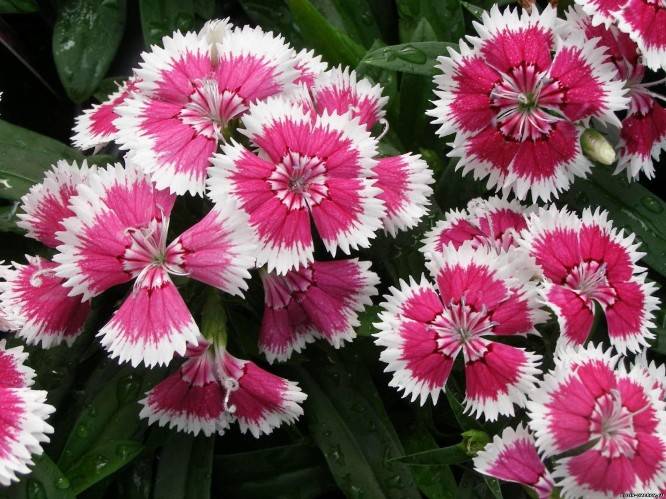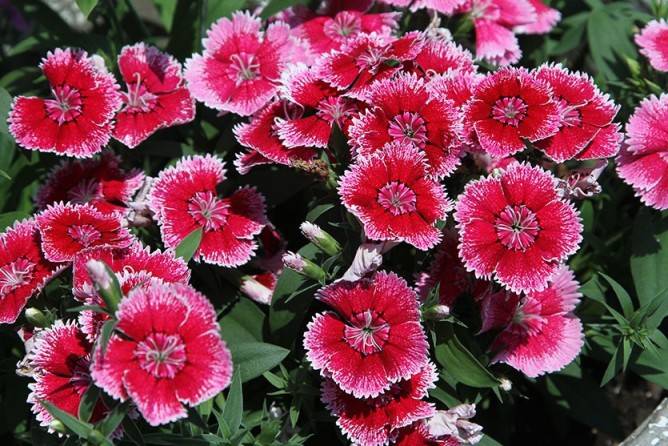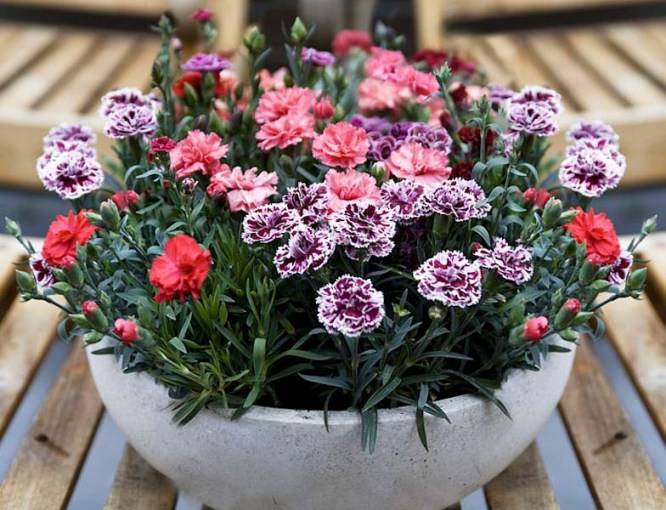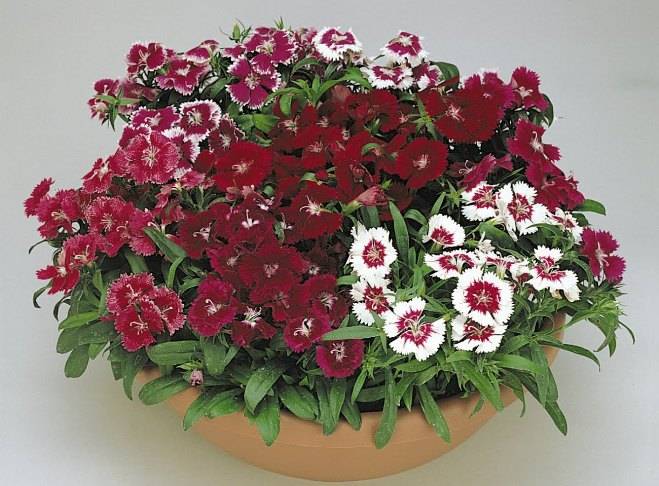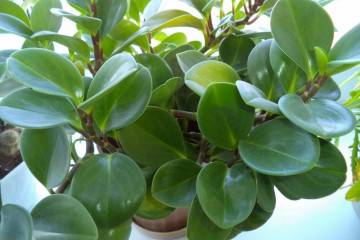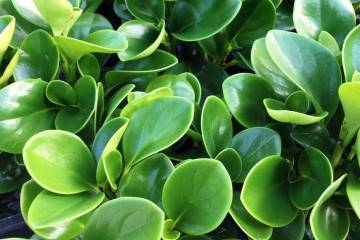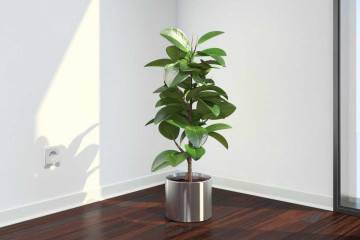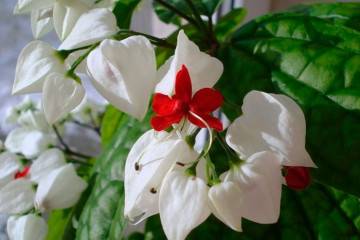Indoor carnation - home care
Content:
Homemade carnation in a pot does not feel worse at all than in a flower bed or in a greenhouse. She decorates window sills and balconies, looks great in pots and pots. Does not require special care conditions. With proper planting and attention, it pleases with growth and flowering.
Indoor carnation - home care
Even an unpretentious plant loves care and good care and responds to this with healthy and beautiful flowering.
Features of carnation carnation at home
The flower is not happy with the increased air temperature. It grows well at 20-25 ° C. It tolerates 13 and 35 ° C well, but high temperatures negatively affect flowering. In addition, the culture does not tolerate sharp temperature changes, which have a bad effect on its growth.
Carnation in a pot: home care
Carnation care includes watering, spraying, feeding. In addition, control over light and humidity is required.
Lighting
This plant loves light and requires sufficient light. When placing flowers, avoid the north side of the dwelling.
Lack of lighting will negatively affect the plant. Growth will slow down, the number of inflorescences will decrease. In this case phytolamps are used. With an excess of sunlight (in July), the carnation is covered with protective devices.
Watering
The flower loves wet ground. During the growing season, it is watered abundantly. It is important that the soil does not dry out. But it is also impossible to allow liquid stagnation. Therefore, when planting, drainage is placed on the bottom of the pot.
Water for irrigation is defended and warmed up to room temperature. Water in the morning or evening. During the flowering period, once a week, in winter, no more than 2 times a month.
Spraying and moisture
On hot days, in the evenings, the plant is sprayed. Moisture on flowers is not encouraged.
In the room where the carnation lives, there must be high humidity. The best option is 65–75%. The flower will be cozy and comfortable.
Priming
The flower prefers sandy, sandy or clayey soil. For home carnations, you need a neutral soil from leafy soil, peat and sod land. The components are taken in a 1: 1: 2 ratio. Ready-made soil mix purchased from a store is suitable. Before planting carnations in the ground, the soil is treated with antiseptics.
Top dressing
Home care for a room carnation includes top dressing. The procedure stimulates growth and flowering. They are fed with complex fertilizers with an increased amount of potassium.
The first feeding is carried out with liquid fertilizer - the flower is sprayed with a stem height of 9–10 cm. The second is before flowering. Then sprayed every two weeks.
Features of care in winter and during the dormant period of room cloves
The procedure for caring for home carnations in winter:
- Maintain the room temperature at 20-25 ° C. Coolness and 10-15 ° C are more favorable in the morning.
- In the autumn-winter period, the plant needs illumination. From morning to evening, a fluorescent lamp is left burning.Rotate the pot regularly so that each section of the plant receives uniform illumination.
- Do not place pots next to heating appliances.
Indoor carnation does not need complete rest. But with a reduction in daylight hours, the plant is given a slight unloading. Less often watered so that the roots and stems do not rot. They practically refuse to spray and fertilize, leaving only foliar dressing.
When and how it blooms
There are over 3 hundred types of carnations. Some are cultivated indoors. Among them there are decorative and hybrid species. Household crops are annual or perennial.
Flowering period
The usual time to start flowering is 3-4 months after planting in a pot. Flowering continues from early spring to the very frost, depending on the type of carnation. Flowers do not fade for a long time and retain their aroma and freshness for about 5 weeks. If a carnation is planted in the fall, then it blooms in six months. To extend the flowering period, dried flowers are removed.
Types of flowers
Select compact types of home carnation flowers, for example:
- The Chinese species is a one-year-old with creeping stems, the height of which is 25–30 cm. The flowering period is June - October. The flowers are white, red, pink or lilac, with patterned petals and jagged edges.
- Turkish or bearded carnation is a two-year culture. Branching stems, 20-25 cm high. Flowers 1 cm in diameter. Double or simple. The inflorescences are 12 cm in diameter. Blooms in the second year from planting. In the third year, the carnation is disposed of.
- Dutch or Garden variety. Only the Grenadine variety is grown indoors. The culture is perennial, grows up to 40 cm, blooms in the second year of life from February to late autumn. The flowers are simple or double, pink, white, variegated, yellow and red.
- Hybrid short, up to 20 cm. The flowers are graceful with dissected petals and a wonderful aroma.
- Indian - evergreen low bush with shiny leaves, white flowers and inflorescences of 10 buds. The buds have 5 petals and a pleasant scent.
In addition to these species, the Shabo carnation blooms until late autumn. Growing Shabo cloves from seeds at home is impossible. This is a garden version and gets into the room only with the onset of cold weather, when Shabo is dug up from the site, planted in a pot, then transferred to the house, where it blooms until mid-November.
How indoor carnation multiplies
The plant is propagated indoors by seeds. In March - April, seeds are sown immediately in a pot with sand and peat soil. In this case, germination will be increased.
Germinating seeds
Step-by-step procedure for germinating seeds:
- 2-3 grains are planted in a pot to a depth of 2-3 mm;
- spray abundantly with water;
- the dishes are placed in a lighted place;
- cover with foil or glass;
- regularly ventilate;
- when 5-6 pairs of leaves appear, the tops of the sprouts are pinned.
Sometimes the seeds are pre-planted for seedlings. Within 2-3 weeks the carnation will sprout.
Transplanting room cloves
An annual crop growing in the house is not transplanted. The perennial is transferred to new soil in the spring. The immersion depth of the plant is maintained, and the root collar is placed at a level with the soil.
During the procedure, the inflorescences that have time to dry are cut off together with the peduncle, leaving no more than 5 cm. In this case, the flowering period remains for a longer period.
Possible growing problems
To avoid problems in the future and keep the flower healthy, it is necessary to constantly monitor its condition and changes in appearance and behavior.
Here are some rules:
- If the plant refuses to bloom or grow, it is necessary to check whether it has enough room illumination.
- The culture turns yellow and dries - the result of poor-quality soil. The plant should be transplanted into another soil, but pre-treat it with potassium permanganate.
- On the back of the leaves there is a white bloom, the flowering has deteriorated, and the shoots hang down - the flower was struck by pests such as spider mites, aphids, powdery mildew. In this case, the leaves are washed with soapy water, then the plant is sprayed with infusion of tansy or celandine.
With the right lighting, watering and feeding, indoor carnation grows and develops well, rarely gets sick, and adapts without any problems in the new soil after transplanting. By combining different varieties, they get a wonderful creation from beautiful flowers and the surrounding greenery.



